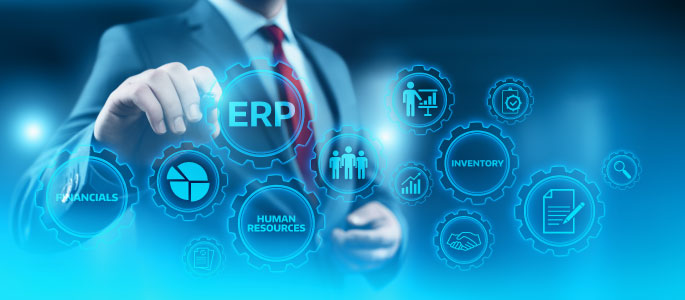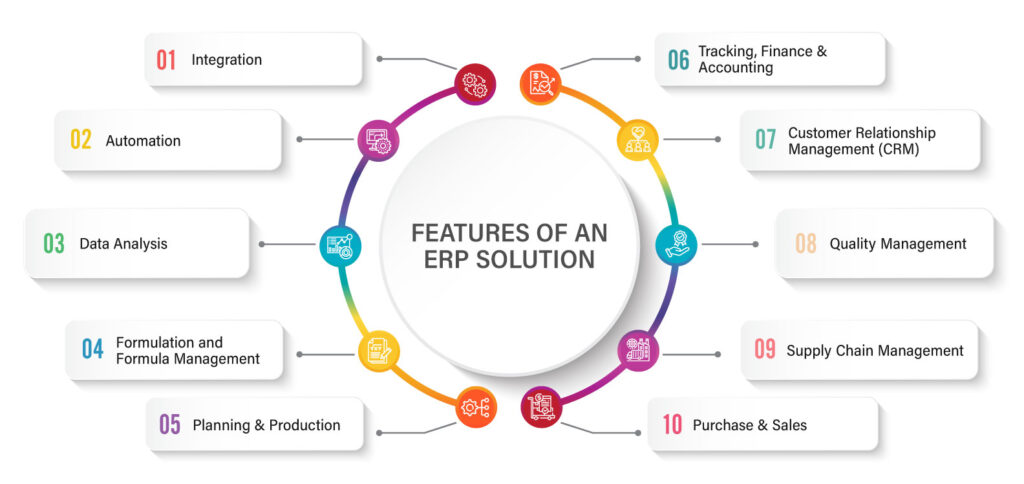
Philippines is one of the promising manufacturing destinations in Southeast Asia. The manufacturing output of Philippines has been on a growth trajectory since 2018, except in 2020, where it saw a decline due to worldwide pandemic and its effects. Agricultural products, tobacco, and textiles accounted for much of the country’s production but is now shifting to more high-tech and pharma manufacturing.
However, businesses today are prone to various uncertainties. Changing geopolitical conditions, supply chain disruptions, changing market trends and consumers’ demands, changing regulatory laws, et al, and Philippines is not an exception.
To sustain amidst such uncertainties, businesses now need a robust support. A support that not only helps businesses to sustain, but to grow as well. Businesses across the world see Enterprise Resource Planning, commonly known as ERP solution, as this support.

This blog will take you through a basic understanding of ERP and its functionalities. Let’s dive into it.
What is an ERP?
ERP stands for Enterprise Resource Planning. It is a business management tool that helps organisations to automate routine jobs and increase transparency among various departments. An ERP software communicates with each department of the organisation via a centralized server. This helps each department to access real-time data, ensuring seamless and uniform information flow throughout the organisation. This averts confusion and delays among departments, data duplication, and the whole system works in cohesion.
With the help of an ERP solution, businesses plan their daily activities like production, sales, purchase, accounts, finance, etc.
The goal of using an ERP in business is to increase visibility, avoid confusion and information latency, automate redundant processes, collect data on various aspects of business, and use that data to get meaningful insights for informed decision-making; thus, reducing losses and increasing profitability.
Features of ERP
Below are the key features of an ERP solution:

Integration – An ERP brings a single source and flow of truth in various departments. All the departments share and access data from a centrally located server, averting the information gap among various departments. The best-of-breed modules of an ERP work as a single entity and in conjunction to each other. This way, ERP shuns the need to manage and manually upload/download data between various software, reducing errors and saving time.
Automation – Automation is one of the main features of an ERP.
It can automate not just tedious tasks like invoicing, reporting, accounting, and such, but the entire supply chain.
By automating various processes, human asset of an organisation can devote time in other useful and productive work, than doing the repetitive daily-chore processes.
Automation also helps to reduce errors caused due to human intervention and thus saves time. In nutshell, automation helps increase productivity of an organisation.
Data Analysis – An ERP solution not only collects data related to various business operations; it helps to analyse it also. Data analysis helps C-Suite to make necessary decisions, tweak processes or do market innovation.
These all are based upon foundation of workable insights and not mere intuitions. An ERP helps to get that insight through its interactive dashboards that enable in-depth “what-if” analysis on costs, properties, materials, etc. Its out-of-the-box reports provide trends, sales history, low running, and high running items, etc, enabling planning future and current course of actions for profitability.
Formulation and Formula Management – Formula/recipe is life-force for any process manufacturer. It helps manufacturers to innovate, store, manage, and control formulas/ recipes and their variations. In-built workflows and approvals ensure formulas are safe and secured.
Its R&D feature, through its computerized calculations and integration with databases like Genesis, USFDA, etc., help manufacturers bring product innovation to the market in a faster and cost-effective way.
Planning & Production- An ERP can help in planning and controlling production. Planning helps reducing wastage and increasing profits.
In reference to the above planning, manufacturer can plan what, when, and how much to order, and when to schedule the delivery of an order considering all the lead times and QC times. Production and material planning lowers down demand vs supply gap and alienates chances of delayed deliveries.
Tracking and visibility – This feature helps manufacturers to track the product from vendor to the customer and back.
The feature ensures that every product is tracked, both forward and backward – from vendor through to production and delivery to customer, and vice-versa.
Tracking and visibility ensure that the products can be recalled, or queries related to the product can be solved at any point of time, within no time, as per the situation demand, quite before it creates damage to the life and brand.
Finance & Accounting- The accounting ability of ERP stands for, but not limited to, store, track and analyse financial data like accounts payable, account receivable, general ledger, budget, and forecasting.
ERP functions involve more advance tasks such as tax management, revenue recognition and multi-currency support.
Customer relationship management (CRM)- The customer relationship management allows sales staff to register and manage all past, current, and future deals.
It lets to store customer contact details, contract history, personal data, and billing information in a centralized repository. CRM helps to design comprehensive customer care solution.
One can easily create campaigns, track customer throughout the sales lifecycle and gauge customer satisfaction.
CRM through its 360-degree view into customer interaction helps organisations to:
- Effectively identify prospects.
- Manage customer information precisely.
- Resolve customer queries and complaints
- Be responsive and gauge customer satisfaction for repeat business
Overall, CRM feature of ERP helps generate and maintain long-term relations with customer for continued business.
Quality Management- The market, post-covid, is quality conscious. Thus, ensuring quality at every step is uncompromisable. An ERP software has a dedicated module that ensures the quality of products at every step of the supply chain. Right from warehouse in, to production, to warehouse out, an ERP can check quality at every stage and ensures that only those products reach to the market which are quality checked and quality test passed. Quality is not limited to the material only but extends up to quality of formulas, equipment and machines used in production and can be checked thoroughly by implementing an ERP
Manufacturers rely on various business partners to procure raw material and deliver finished goods to the consumers.
Supply chain planning encapsulates everything that exist between raw material procurement to selection of apt channel to promote finished good. It determines quality of stock in inventory, ensuring replenishment of stock and optimizing production process to balance demand and supply ratio, distribution of finished goods. ERP helps to tackle supply chain issues with finesse and precision bringing in agility and resilience, something that’s indispensable in this new-normal era.
An ERP solution takes care of the whole supply chain by providing live feeds and real-time information from all parts. This enables businesses to predict and identify issues as and when they happen; and eventually get prepared to timely resolve them.
Purchase & Sales- An ERP solution helps manufacturer to plan materials, generate quotes and orders, perform receipts, and send invoices to a vendor through a digital interface. All the stages are inter-related which get integrated too through an ERP, thereby averting thread loss or reference loss of the process.
It helps manufacturers to identify best supplier based on various factors including, price, quality, lead-times, etc.
While Sales module helps manage customers, track customers, dispatch products, raising sales invoice, receive payments and manage return orders all in a snap.
It also offers automated expense tracking, tracking lost orders, and making reports. This report helps tracking sales trend in particular period and predict sales for next period.
ERP software helps to understand customer’s preference by maintaining details of customer profile. This need or preference analysis helps to offer upselling product to customer.
Conclusion
In the world where businesses are volatile, exposed to many challenges plus threats yet have ample opportunities to grow, businesses need robust and agile ERP solution to steer it through. For process manufacturers in Philippines, BatchMaster is such an ERP software. It comes with a whole bouquet of advanced features and abilities to embrace digitalization and stay ahead of the curve. If you are curious to know how BatchMaster can help you to tap the growing market opportunities and counter the challenges, click here.



